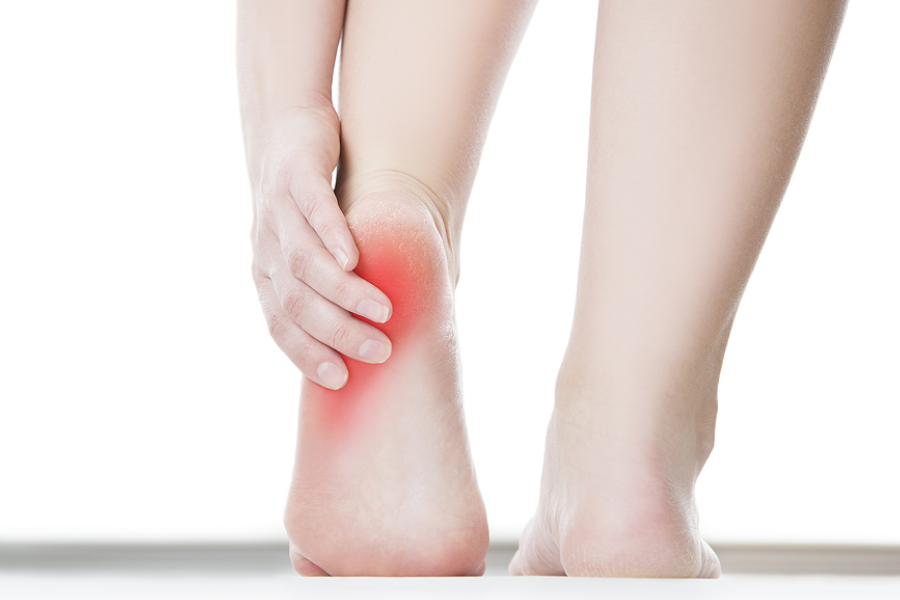Understanding Plantar Fasciitis: Causes, Symptoms & Treatments

Plantar heel pain, commonly referred to as plantar fasciitis, is one of the most frequent foot conditions seen in clinics across Singapore. While “plantar fasciitis” is still widely used, healthcare professionals are now shifting towards more accurate terms such as plantar fasciopathy or plantar fasciosis, with plantar heel pain being the most appropriate umbrella term. The reason for this change is more than just semantics, using the correct term helps guide better treatment decisions.
For a clearer explanation of why terminology matters and how it affects recovery, you can watch this informative video on plantar heel pain.
Why terminology matters
Plantar fasciitis implies that there is inflammation (the suffix “-itis”) of the plantar fascia, which is a band of tissue that runs from the heel bone along the arch of the foot. However, research has shown that inflammation isn’t the primary issue in most cases. Instead, the condition tends to involve wear and tear or degeneration of the tissue, often without inflammation. For this reason, terms like plantar fasciosis (degenerative condition) or plantar fasciopathy (general dysfunction of the plantar fascia) are more accurate.
Because so many different structures attach to the heel — including ligaments, muscles, and fascia — pinpointing the exact source of the pain is often impossible. That’s why the term plantar heel pain is now preferred. This avoids misleading patients and clinicians into assuming it’s an inflammatory issue that can be resolved with anti-inflammatory medication or rest, both of which are typically ineffective in this case.
Who is affected and why it occurs
Plantar heel pain does not discriminate. It affects both active individuals and those with sedentary lifestyles. People who suddenly increase their activity level, such as taking long walks during overseas holidays or jumping into a new fitness routine, often find themselves dealing with sharp heel pain shortly after.
A significant number of housewives who engage in only minimal weekly exercise still develop this condition and seek help at the podiatry clinic. This suggests that plantar heel pain isn’t necessarily linked to how much activity a person does, but rather how that activity is performed and whether the foot mechanics involved are supportive and well-aligned.
Foot posture is a major contributing factor. Poor biomechanics such as excessive pronation or supination, incorrect loading, or inappropriate running or walking patterns can cause the structures at the heel to become overloaded. Over time, this stress results in microtears in the tissues or even inflammation in the bone itself, a condition known as periostitis.
When these microtears accumulate without intervention, a painful cycle begins. The longer it goes untreated, the worse the condition becomes. While plantar heel pain is technically a self-limiting condition, it can persist for years and even return after disappearing. That’s why early treatment is key to recovery.
What not to do if you have heel pain
Misinformation online has led many to take steps that unfortunately worsen their condition. One of the most common and damaging pieces of advice is to massage the heel. Whether it’s rolling your foot on a golf ball or going for reflexology, these actions might feel relieving in the short term but can significantly aggravate the condition.
This is not a sore muscle — it is often a degenerative tear or bone-related inflammation. Applying pressure on an injured area only adds to the trauma. Avoid deep tissue massage, rolling balls under your foot, or any activity that involves pressing into the painful spot.
You may ice the area and make short-term changes like wearing supportive shoes and modifying your activities. However, in most cases, professional care is necessary for true recovery.
Effective treatment options
Singapore-based treatment guidelines focus on a range of options that address the root causes rather than just masking symptoms. Anti-inflammatory drugs can be used sparingly for pain relief, but they are not curative.
More effective strategies include:
- Icing the affected area after activity
- Stretching the plantar fascia and calf muscles
- Shockwave therapy, which helps stimulate tissue repair
- Taping techniques to reduce strain on the heel
- Custom-made orthotics, one of the cornerstone treatments in managing plantar heel pain
- Footwear modifications to ensure better support and load distribution
These interventions work best when started early. Waiting months or even years before seeking treatment often means more extensive therapy is needed later on.
Don’t let heel pain linger
The longer you wait, the more this condition can impact your quality of life. Many patients believe the pain will eventually go away, but plantar heel pain has a frustrating tendency to return — sometimes even worse than before. Early intervention is crucial in avoiding long-term discomfort and complicated treatment paths.
For those experiencing persistent heel pain, Family Podiatry Centre offers comprehensive care tailored to each individual’s needs. As a trusted foot clinic in Singapore, we help patients understand the true nature of their condition and provide evidence-based treatment options that work. Visit Family Podiatry Centre today to start your journey towards pain-free movement.
Disclaimer: The word "treatment" in this article refers to the care and management of a patient’s health to prevent, cure, or improve a condition. Treatment results vary and do not necessarily indicate a cure.
Mark Reyneker
B.T. Pod (SA), MSc (SA)
Podiatrist and Human Gait Specialist
Registered with the Podiatry Association of Singapore
Founder and Director:
Family Podiatry Centre Pte Ltd
Family Podiatry Centre Sdn Bhd
Solescape Orthotics Laboratory
Solescape Shoes brand
